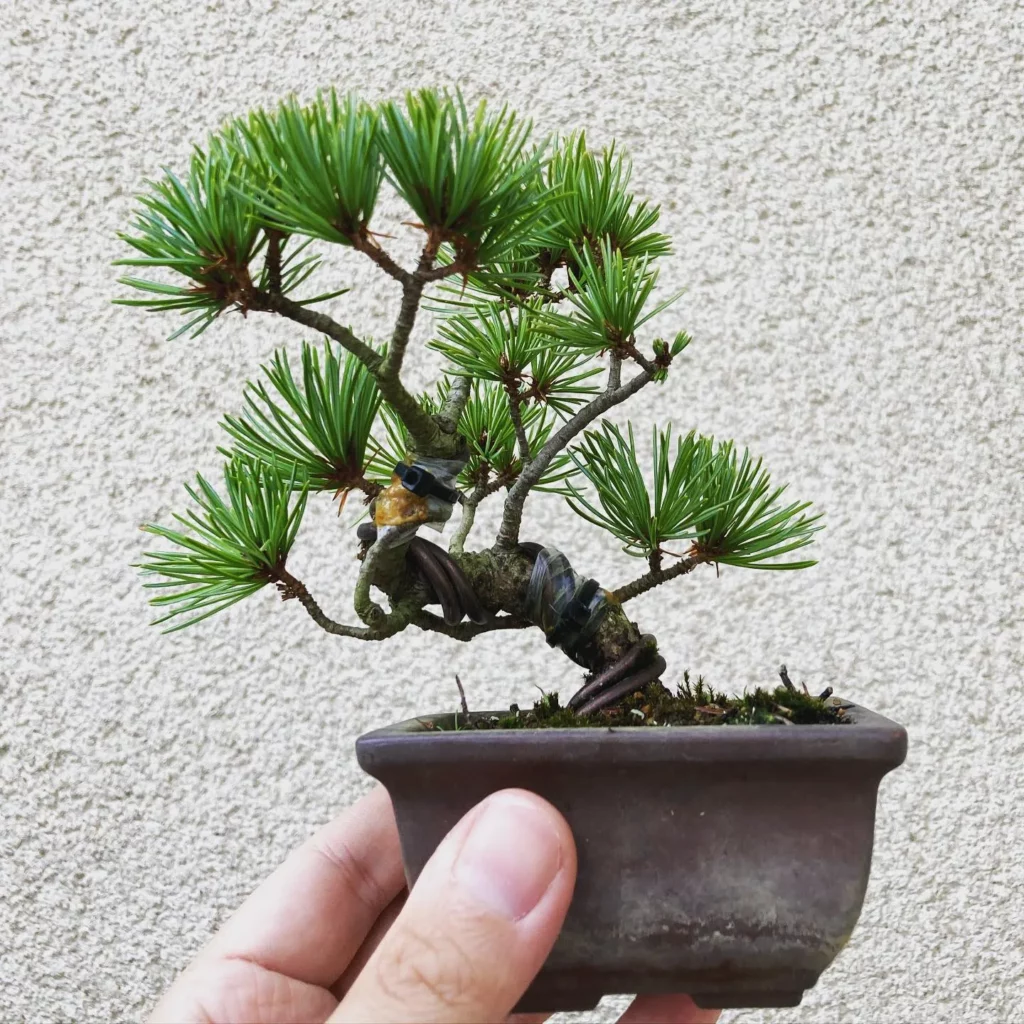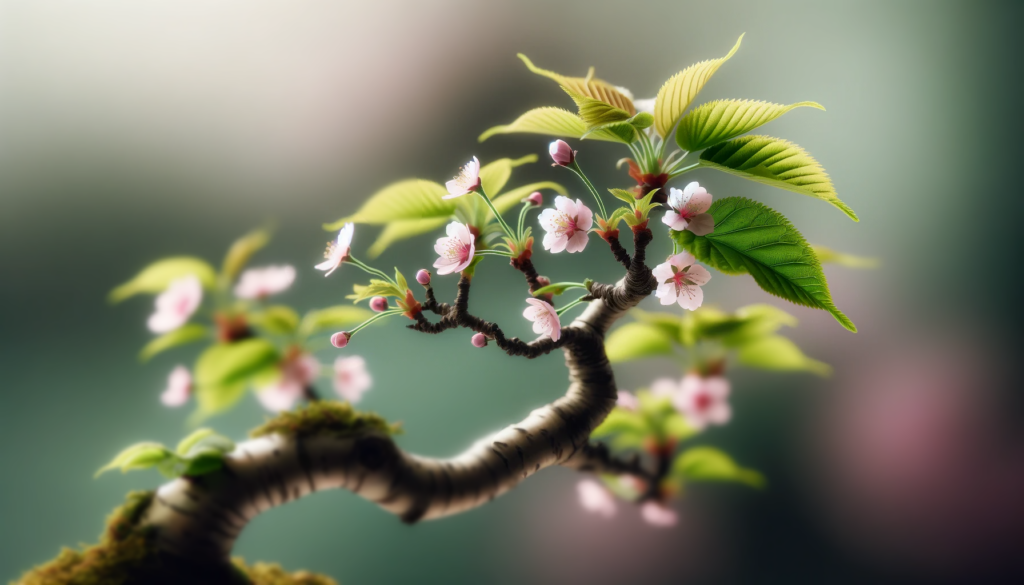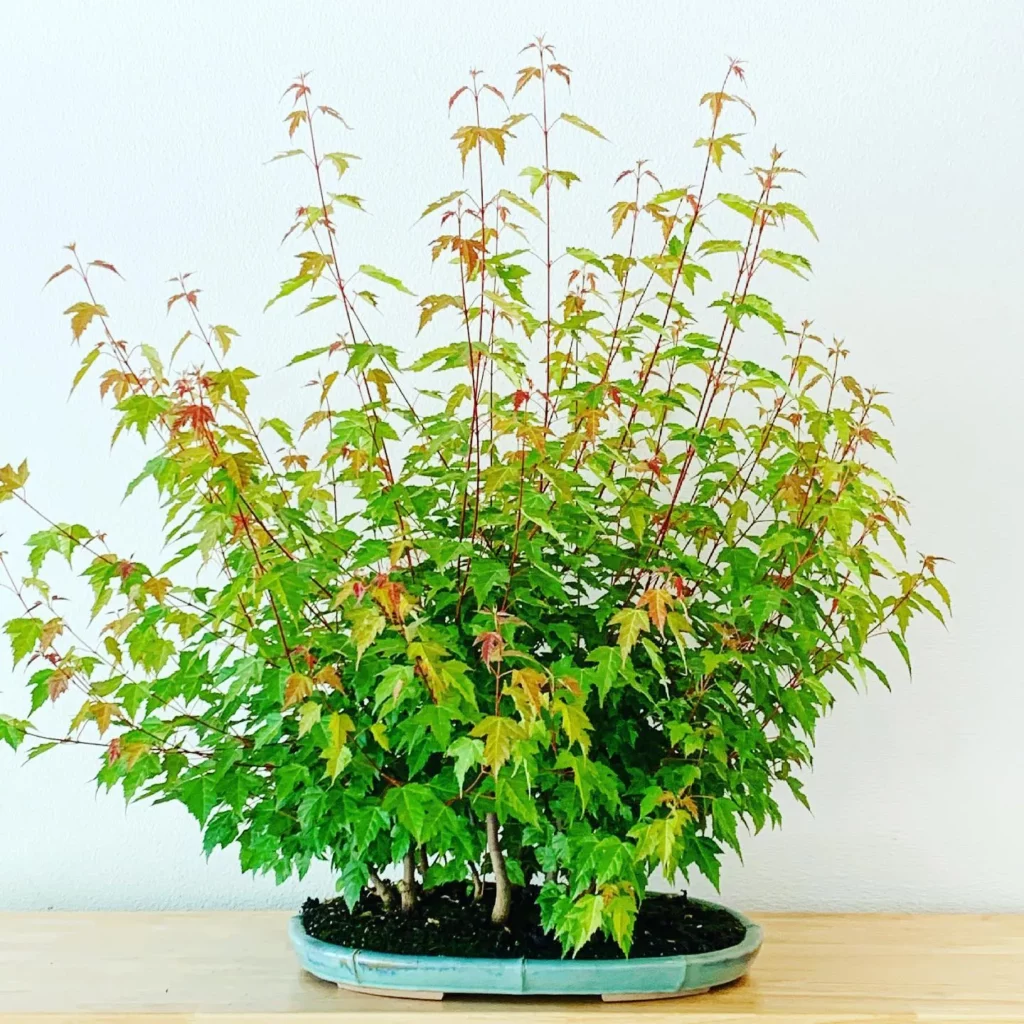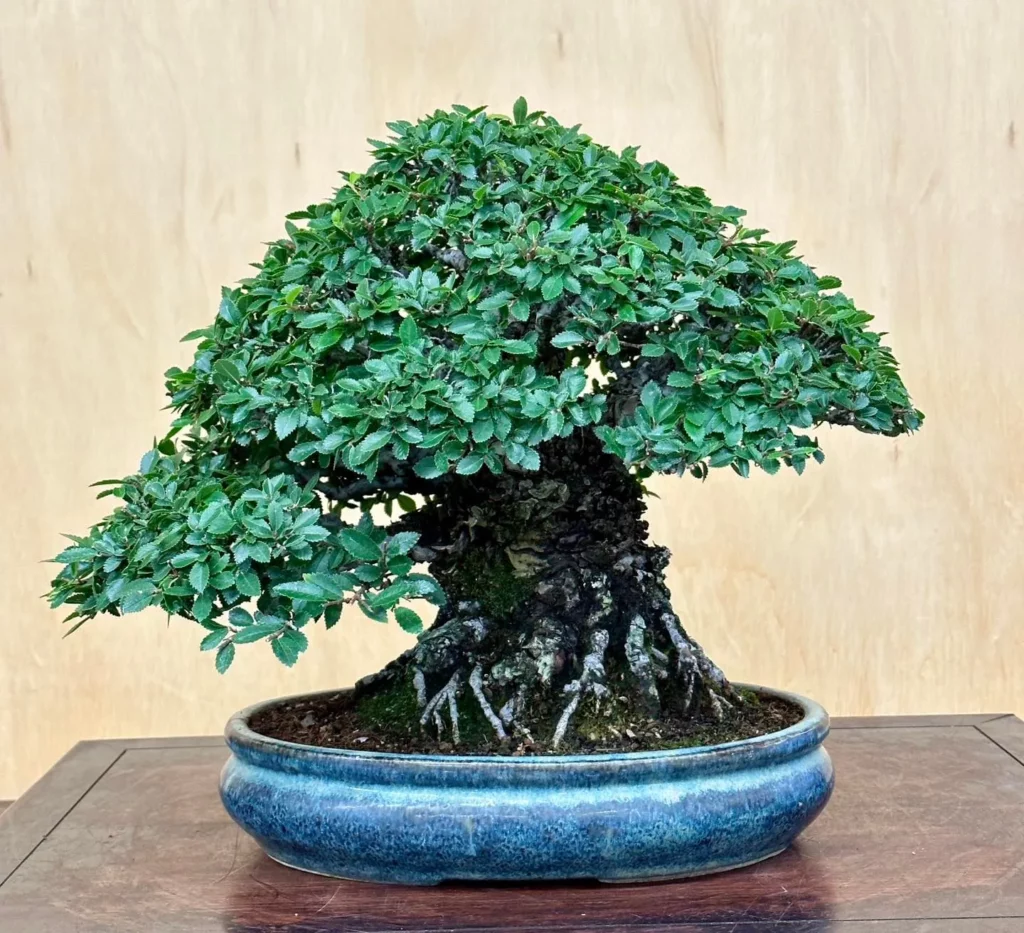Driftwood bonsai is more than just cultivating miniature trees in pots; it’s about sculpting a unique aesthetic that mirrors the beauty found in natural landscapes. With driftwood as a central element, you can enhance the visual appeal of your bonsai trees by embracing the textures, shapes, colors, and movements found in nature.
Definition Of Driftwood Bonsai

Driftwood bonsai is an art form that combines the beauty of bonsai trees with the natural allure of eroded wood. It involves incorporating naturally shaped and weathered driftwood into the design of a bonsai tree, resulting in a visually stunning composition that mimics the patterns found in nature.
In driftwood bonsai, the focus is not only on the tree itself but also on the unique attributes of the driftwood. The shape, texture, color, and movement of the driftwood all play a crucial role in creating a harmonious and aesthetically pleasing arrangement. By seamlessly integrating the driftwood into the design, the artist achieves a sense of balance and artistry.
Driftwood bonsai truly brings together the art of cultivating miniature trees with the creative utilization of natural materials. It allows enthusiasts to express their creativity and appreciation for nature by crafting captivating compositions that showcase the inherent beauty of both the tree and the driftwood.
No products found.
Importance Of Driftwood In Bonsai Art
Driftwood plays a vital role in enhancing the beauty and authenticity of bonsai trees, making it an indispensable element in bonsai art.
The first, and perhaps most obvious, importance of driftwood in bonsai art is its ability to add character and depth to the structure of the trees. The weathered appearance of driftwood brings a sense of age and natural beauty to the bonsai, mimicking the look of trees that have withstood the test of time in nature. The unique shapes, textures, and colors of driftwood create an intriguing visual contrast with the delicate foliage of the bonsai trees, resulting in a visually captivating composition.
Beyond its aesthetic value, driftwood also serves functional purposes in bonsai art. It provides a sturdy anchor point for the tree’s roots, ensuring stability and promoting healthy growth. By securely positioning the bonsai on the driftwood, enthusiasts can experiment with different orientations without disturbing the tree’s growth or damaging its delicate branches and foliage.
Moreover, the use of driftwood allows bonsai artists to create unique compositions that reflect their artistic vision and style. Each piece of driftwood has its own distinct shape, texture, and color, enabling artists to craft one-of-a-kind bonsai trees that stand out from the crowd. Whether used as a centerpiece or as a supporting element, driftwood adds a touch of natural elegance and authenticity to bonsai art.
Types Of Driftwood For Bonsai
When it comes to creating driftwood bonsai, there are two main types of driftwood commonly used: coastal and river driftwood.
Coastal Driftwood
Coastal driftwood is weathered and aged by the ocean currents, resulting in unique shapes and forms. This type of driftwood often has fascinating twists, bends, and intricate patterns that can add a sense of drama and artistry to your bonsai composition.
River Driftwood
On the other hand, river driftwood has a smoother texture and a more refined appearance. It is shaped by the gentle flow of river water over time. River driftwood is often characterized by its elegant curves and soft lines, providing a subtle and serene aesthetic for your driftwood bonsai.
Preparation Of Driftwood For Bonsai

Before using driftwood in your bonsai creation, it is essential to properly prepare it to ensure the health and longevity of your tree. By following these simple steps, you can clean and sanitize the driftwood, allowing it to harmoniously blend with your bonsai:
- Scrub the driftwood: Using a brush or abrasive pad, gently scrub the surface of the driftwood to remove any dirt, moss, or loose bark. This process will help reveal the natural beauty of the wood and prepare it for further treatment.
- Soak the driftwood: Fill a container with water and submerge the driftwood completely. Let it soak for several days to leach out any impurities and loosen any remaining debris.
- Clean with bleach solution: After soaking, prepare a bleach solution by mixing one part bleach with ten parts water. Place the driftwood in the solution and let it sit for approximately 24 hours. This will help eliminate any harmful bacteria or fungi present on the wood.
- Rinse thoroughly: Remove the driftwood from the bleach solution and rinse it thoroughly under running water. Ensure that all traces of bleach are removed to prevent any potential negative effects on your bonsai tree.
- Remove loose bark and debris: Use a soft brush or cloth to gently remove any remaining loose bark or debris from the driftwood’s surface. This step will provide a clean canvas for shaping and enhancing the wood’s natural texture.
- Sand and shape: If desired, lightly sand the driftwood to smoothen any rough edges or surfaces. You can also shape the driftwood to complement the overall design of your bonsai tree. Be sure to maintain the natural contours and character of the wood to create an authentic and harmonious composition.
Techniques for Creating a Driftwood Bonsai

When it comes to creating a driftwood bonsai, selecting the right tree species is paramount to complement the texture and color of the driftwood. Consider trees such as juniper, pine, spruce, cedar, elm, maple, and oak, as they are well-suited for different types of driftwood.
Positioning the tree on the driftwood is essential to maintain a natural appearance. Ensure the tree fits harmoniously with the contours and shape of the driftwood, creating a visually appealing composition. Use wire anchors if necessary to secure the tree onto the driftwood, providing added stability and preventing any unintended movement.
Here are the techniques for creating a stunning driftwood bonsai:
- Select the appropriate tree species that complements the texture and color of the driftwood.
- Position the tree on the driftwood in a way that creates a natural and aesthetically pleasing composition.
- Secure the tree onto the driftwood using wire anchors if needed to ensure stability.
Tips On How To Position Your Tree On The Wood
When it comes to positioning your tree on the driftwood, there are a few tips to keep in mind to ensure a natural and visually appealing composition.
Angle and Space:
Place the tree at an angle that mimics its natural growth pattern. This creates a sense of movement and adds visual interest to your driftwood bonsai. Additionally, make sure to provide enough space for the branches to grow and spread, allowing your bonsai to thrive and maintain a balanced look.
Distribution of Weight:
Avoid putting excessive weight on one side of the driftwood. This can lead to instability and potential breakage. Instead, distribute the weight of the tree evenly across the driftwood. By doing so, you ensure the stability and longevity of your driftwood bonsai.
Wire Anchors:
For added support, you can use wire anchors to secure the tree to the wood. Carefully wrap copper or aluminum wire around the trunk and the driftwood, creating anchor points that help hold the tree in place. These wire anchors provide extra stability, especially for larger or heavier trees.
No products found.
How to Secure Your Tree to the Wood
To ensure your bonsai tree remains securely positioned on the driftwood, there are a few effective methods you can use:
- Copper or Aluminum Wire: Wrapping the trunk and driftwood with copper or aluminum wire creates anchor points that help secure the bonsai tree in place. Simply wrap the wire tightly around both the tree and the wood, ensuring a firm hold without causing damage.
- Metal Bolts: Another option for providing stability is to use metal bolts. By drilling small holes into the driftwood and carefully attaching the bolts, you can secure the tree firmly to the wood. Make sure to choose bolts that are appropriate for the size and weight of your bonsai tree.
Choosing the Right Tree Species for Your Driftwood

When creating a driftwood bonsai, it’s important to choose a tree species that complements the texture and color of the driftwood. Consider the size, shape, and overall appearance of the bonsai tree in relation to the driftwood to ensure a harmonious composition. Here are some suitable tree species that work well with driftwood:
Treatment Before Use
Before incorporating bonsai driftwood into your aquatic setup, it is essential to take proper precautions to ensure the best results and maintain optimal water chemistry. Driftwood contains tannic acid, which can stain the water yellow or brown if not properly treated beforehand. To prevent tannins from affecting the water chemistry, it is recommended to follow these steps:
- Boiling: Boil the driftwood for at least one hour to remove tannins and other impurities. This process helps release the tannic acid and decreases the chance of experiencing a pH drop in the aquarium.
- Soaking: If boiling is not feasible or desired, soaking the driftwood in water for a week can also help leach out the tannins. Remember to change the water daily to speed up the process.
Conclusion
The importance of driftwood in bonsai art cannot be overstated. It adds character and depth to the structure of the bonsai tree, creating a natural-looking composition that mimics the patterns found in nature. Whether you choose coastal or river driftwood, both types can be used to create stunning driftwood bonsai trees that will captivate the eye.
Before using driftwood in bonsai, it is essential to prepare it properly. Cleaning and disinfecting the driftwood will ensure the health and longevity of your bonsai tree. Additionally, choosing the right tree species to complement the driftwood’s texture and color is crucial for achieving a harmonious and authentic look.
Embark on your serene journey of creating driftwood bonsai today and unlock your artistic potential. With a little creativity, patience, and attention to detail, you can create a miniature masterpiece that showcases the beauty of nature and brings a sense of tranquility to your surroundings. Start cultivating your driftwood bonsai and embrace the harmony of nature and artistry.
After this check out our other articles on:
FAQ
What is driftwood bonsai?
Driftwood bonsai is the practice of incorporating naturally eroded wood into a bonsai tree’s design to enhance its visual appeal and create a composition that mimics nature’s patterns.
Why is driftwood important in bonsai art?
Driftwood is important in bonsai art as it adds character and depth to the structure of the tree. It creates a natural-looking aesthetic and serves functional purposes such as providing an anchor point for roots and allowing for different positioning without disturbing growth.
What are the types of driftwood used in bonsai?
The two common types of driftwood used in bonsai are coastal driftwood, which is aged with unique shapes sculpted by ocean currents, and river driftwood, which has a smoother texture.
How do you prepare driftwood for bonsai?
Before using driftwood in bonsai, it must be cleaned and disinfected to remove any harmful bacteria or fungi. This involves scrubbing the wood, soaking it in a bleach solution, and rinsing it thoroughly. Loose bark and debris should be removed, and sanding and shaping techniques can be used to achieve the desired form and smoothness.
What are the techniques for creating a driftwood bonsai?
Techniques for creating a driftwood bonsai include choosing the right tree species that complement the driftwood’s texture and color, positioning the tree on the driftwood to maintain a natural look, and securing the bonsai tree in place using wire anchors or metal bolts for stability.
How do you position a tree on driftwood?
When positioning a tree on driftwood, it is important to choose an angle that appears natural and provides enough space for branch growth. Avoid putting excessive weight on one side of the driftwood to prevent instability and breakage.
How do you secure a tree to driftwood?
To secure a tree to driftwood, copper or aluminum wire can be wrapped around the trunk and driftwood to create anchor points. Metal bolts can also be used for added stability.
How do you choose the right tree species for driftwood?
The tree species selected for the driftwood should complement its texture and color. Some suitable options include juniper, pine, spruce, cedar, elm, maple, and oak.
What treatment should driftwood undergo before use?
Driftwood bonsai contains tannic acid, which can stain water yellow or brown. To prevent tannins from affecting water chemistry, it is recommended to boil or soak the driftwood for a week before adding it to the tank. This helps release the tannins and decrease the chance of a pH drop.




